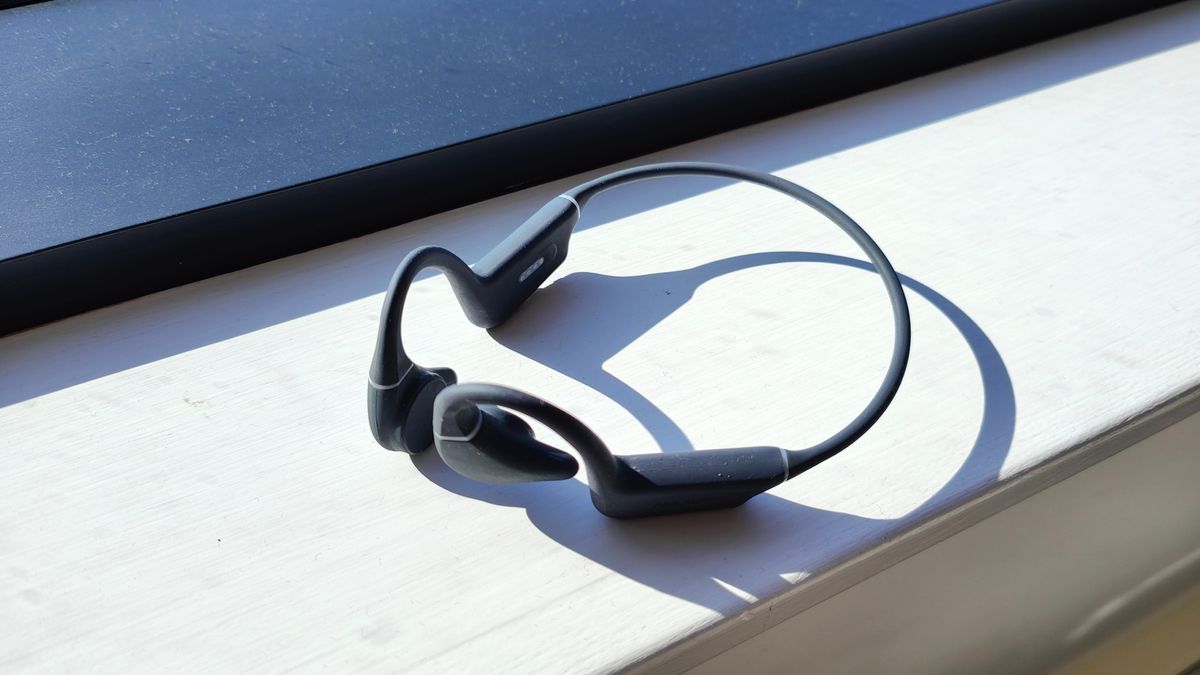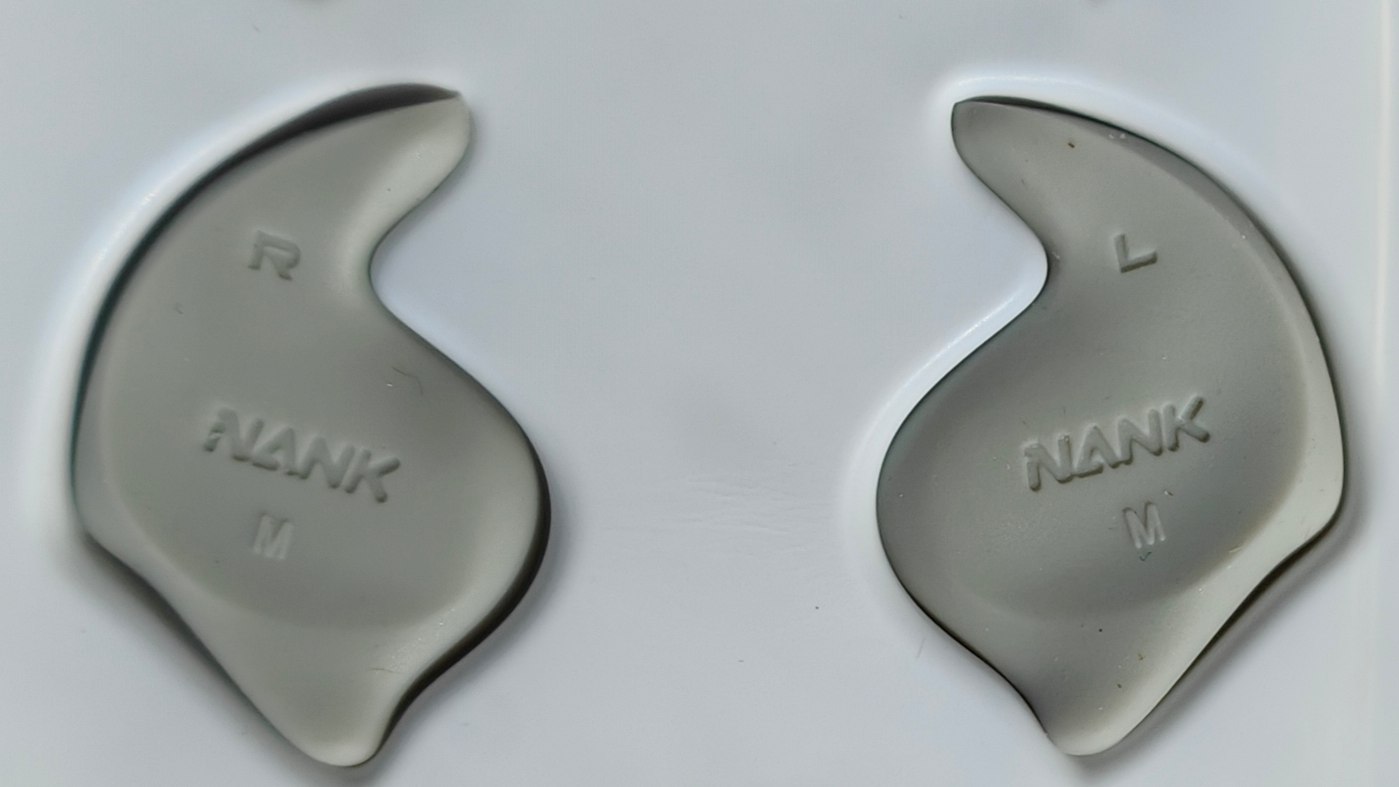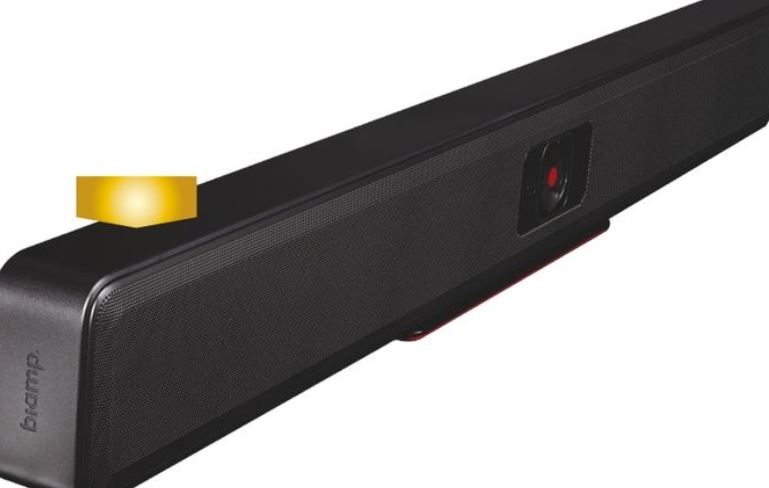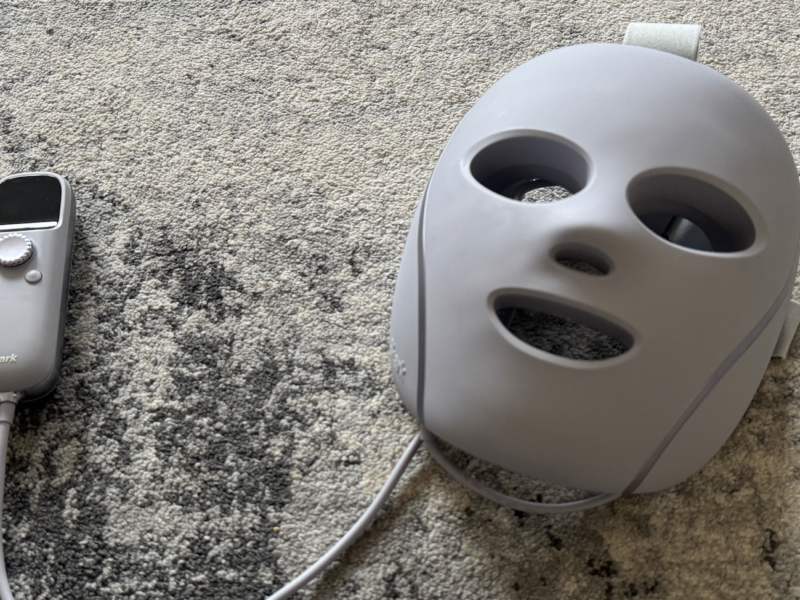Finding headphones that can genuinely survive the rigors of swimming, let alone deliver decent audio underwater, has long been a challenge for aquatic athletes and fitness enthusiasts. Splashes, submersion, and the inherent limitations of Bluetooth underwater often leave swimmers in silence. Enter the Nank Runner Diver2 Pro, a pair of bone conduction headphones boasting an impressive IP69 waterproof rating, massive onboard storage, and features designed for multi-sport athletes. But does this ambitious headset live up to its promises, particularly in the demanding environment of the pool?
This review dives deep into the Nank Runner Diver2 Pro, examining its specifications, real-world performance during swimming, running, and gym use, and how it stacks up against key competitors like Shokz and H2O Audio. We’ll unpack whether its high-level waterproofing and feature set make it a game-changer or just another drop in the ocean of waterproof audio gear. Ideal for swimmers, triathletes, runners, cyclists, and anyone seeking durable, versatile audio for intense workouts, the Runner Diver2 Pro aims high. But does that top-tier spec sheet translate into a superior experience where it counts? Let’s find out.
Contents
- 1 Nank Runner Diver2 Pro: Unpacking the Specs and Features
- 2 Putting the Nank Runner Diver2 Pro to the Test: Real-World Performance
- 3 Nank Runner Diver2 Pro vs. The Competition: Shokz & H2O Audio
- 4 Nank Runner Diver2 Pro: The Good and The Bad (Pros & Cons)
- 5 Verdict / Final Thoughts: Should You Buy the Nank Runner Diver2 Pro?
- 6 Frequently Asked Questions (FAQs) / Extra Info
- 7 Share Your Experience
Nank Runner Diver2 Pro: Unpacking the Specs and Features
Understanding the technology and specifications behind the Runner Diver2 Pro is crucial to appreciating its potential and limitations.
Core Technology: Bone Conduction and Sound Leakage
Like many sports-focused headphones, the Runner Diver2 Pro utilizes bone conduction technology. Instead of traditional drivers that push sound waves into your ear canal, these headphones feature transducers that rest on your cheekbones, just in front of your ears. These transducers transmit sound vibrations through your bones directly to your inner ear, bypassing the eardrum. This open-ear design is a major advantage for activities like running and cycling, as it allows you to remain aware of your surroundings – traffic, other people, environmental sounds – enhancing safety.
Nank incorporates proprietary technologies like “OT leakage reduction” (versions 2.0 or 3.0 mentioned) and potentially “4th Gen ResoVibe™” to minimize sound leakage – where audio escapes and can be heard by others nearby – and reduce the vibrations felt on the skin, a common side effect of bone conduction. While these efforts aim to improve the experience, some degree of sound leakage is inherent to the open-ear nature of bone conduction headphones.
Waterproofing Deep Dive: IP69 vs. IP68 Explained
One of the headline features of the Runner Diver2 Pro is its IP69 waterproof rating. Understanding IP (Ingress Protection) ratings is key here. The first digit rates protection against solids (like dust), and the second rates protection against liquids. A ‘6’ for solids means the device is dust-tight. An ‘8’ for liquids means it’s protected against continuous immersion in water beyond 1 meter, with the specific depth and duration defined by the manufacturer.
The IP68 rating is the standard achieved by top competitors like the Shokz OpenSwim Pro and is generally considered fully sufficient for swimming. The ‘9’ in IP69 signifies an additional level of protection against close-range, high-pressure, high-temperature water jets, a test condition often relevant for industrial equipment needing steam cleaning or sterilization, rather than typical swimming scenarios.
Therefore, while IP69 is technically a ‘higher’ rating on the scale, its specific advantage over IP68 for swimming immersion is debatable. What is potentially more significant for swimmers is Nank’s specific claim that the Runner Diver2 Pro can be submerged up to 10 meters (approx. 33 feet). This claimed depth tolerance is considerably greater than the 2 meters specified for the IP68-rated Shokz OpenSwim Pro or the 3.6 meters for the IPX8-rated H2O Audio Tri 2 Pro. This potential for deeper use, possibly enabled by Nank’s specific “3rd-gen waterproof structure”, might be the more practical benefit for divers or open-water swimmers, rather than the IP69 rating itself.

Connectivity & Storage: Dual Modes for Land and Water
The Runner Diver2 Pro offers flexibility with two distinct modes:
- Bluetooth 5.4: For use on land, it features Bluetooth 5.4, providing a fast and stable connection to smartphones, watches, and other devices. Multipoint connectivity is supported, allowing connection to two devices simultaneously, though some users have reported occasional issues when switching between paired devices.
- 32GB MP3 Player (TF Mode): Crucially for swimmers, Bluetooth signals do not penetrate water effectively. To overcome this, the Runner Diver2 Pro includes a built-in 32GB MP3 player (referred to as TF Mode). This massive storage capacity can hold approximately 8,000 songs or countless hours of podcasts, allowing for device-free listening during swims. Supported audio formats include MP3, M4A, WAV, APE, and FLAC.
Battery Life & Charging: Powering Your Workouts
Nank claims a battery life of up to 10 hours on a single charge, which should be sufficient for even long training sessions or multiple shorter workouts. Real-world usage time can vary depending on volume levels and mode usage.
Charging is handled via a proprietary magnetic charging cable that also serves as the data transfer cable. While magnetic connections are common for waterproof devices to ensure a secure seal, the lack of a universal USB-C port is a drawback compared to modern electronics. On the plus side, the headphones support fast charging, with a 10-minute charge reportedly providing up to 120 minutes of playback time. A full charge takes approximately 1 to 1.5 hours.
Design, Fit & Controls: Comfort and Functionality
The Runner Diver2 Pro features the typical neckband design common to bone conduction headphones, looping over the ears and resting behind the head. It weighs around 31-32 grams, making it relatively lightweight, though slightly heavier than some competitors like the Shokz OpenSwim Pro. The construction uses a combination of silicone, titanium, and plastic for flexibility and durability.
A unique design element is the adjustable ear hooks, which can pivot up to 35 degrees. This allows users to position the transducers closer to the ear canal, which Nank markets as a “Noise-Canceling Mode,” or keep them further away in the standard “Open-Ear Mode.”
Control is managed via three physical buttons located on the right underside of the neckband: Volume Up, Volume Down, and a central Multi-function/Power button. These buttons handle power, play/pause, track skipping, volume adjustment, call management, and mode switching. However, some reviews note that the buttons are positioned quite close together, potentially leading to accidental presses, and the long press required to power off the device (5-10 seconds) can feel excessive.
Included Accessories
In the box, alongside the headphones and magnetic charging/data cable, Nank includes several accessories:
- Earplugs: Standard foam or silicone earplugs are provided. Using these while swimming can block water from entering the ear canal and often enhances the perceived sound quality and bass response of bone conduction headphones underwater.
- “Sound Quality Enhancers”: These are small, silicone pieces designed to fit over the transducers and rest slightly inside the outer ear. They aim to improve sound conduction but may partially defeat the purpose of the open-ear design.
- Adjustable Silicone Strap: This can be used to potentially tighten the fit or secure the headphones further, perhaps attaching them to goggle straps.
Notably, a protective carrying case is not included and must be purchased separately, which is somewhat disappointing given the premium price point.
| Feature | Nank Runner Diver2 Pro Specification |
|---|---|
| Waterproof Rating | IP69 |
| Claimed Depth | Up to 10 meters (approx. 33 feet) |
| Technology | Bone Conduction (OT Leakage Reduction / 4th ResoVibe™) |
| Bluetooth | Bluetooth 5.4 (Multipoint Support) |
| Storage | 32GB MP3 Player (TF Mode) |
| Supported Audio Formats | MP3, M4A, WAV, APE, FLAC |
| Battery Life (Rated) | Up to 10 Hours |
| Fast Charge | Yes (10 min charge ≈ 120 min playback) |
| Charging Method | Proprietary Magnetic Cable (USB-A) |
| Weight | Approx. 31-32g |
| Controls | 3 Physical Buttons (Power/Multi-function, Vol+, Vol-) |
| Key Design Features | Open-Ear, Adjustable Ear Hooks (35°), Passive Noise-Canceling Mode Adjustment |
| Materials | Silicone, Titanium Alloy, Plastic |
| Microphone | Yes (Built-in CVC 6.0 Noise-Canceling) |
| Price (MSRP) | Approx. $199.99 USD / £155 GBP (Often available on sale) |
| Included Accessories | Magnetic Charging/Data Cable, Earplugs, Sound Quality Enhancers, Silicone Strap |
Putting the Nank Runner Diver2 Pro to the Test: Real-World Performance
Specifications only tell part of the story. How do the Nank Runner Diver2 Pro headphones perform in the environments they were designed for?
Swimming Performance (MP3 Mode)
As Bluetooth is ineffective underwater, the built-in MP3 player is essential for swimming. Switching to TF (MP3) mode requires a triple-press of the power/multi-function button. Loading music involves connecting the headphones to a computer via the magnetic cable and dragging-and-dropping compatible audio files onto the device, which appears as a removable drive. Users can also toggle between sequential and random playback by pressing the power button four times quickly.
Once set up, the underwater audio experience is often described positively. Bone conduction technology allows clear audio transmission even when submerged. Many users report the sound quality feels richer or fuller underwater compared to on land, particularly when using the included earplugs, which block out water and external noise, enhancing the perception of bass. Nank also includes a specific “Swim” sound mode, likely an EQ preset to boost volume or clarity underwater, toggled by a brief press of the Volume button in MP3 mode. However, it’s important to remember the inherent limitations of bone conduction; audiophile-grade fidelity isn’t the goal here.
The fit is generally reported as secure and stable, staying in place even during flip turns and faster swimming. They fit comfortably under a standard swim cap and alongside goggles without causing undue pressure. While most find the standard fit secure, the included strap offers extra security if needed, and some users with particularly large heads have noted potential fit challenges.
Durability for swimming appears robust, backed by the IP69 rating and 10m depth claim. They are suitable for saltwater use, but rinsing thoroughly with fresh water after each swim is crucial to prevent corrosion of the magnetic charging contacts. One reviewer noted Nank’s advice against continuous use exceeding 40 minutes, and another user expressed concern about needing to dry the headphones carefully due to a perceived “tight” battery life.
“ alt="Swimmer wearing Nank Runner Diver2 Pro bone conduction headphones under swim cap and goggles in a pool"

Running, Cycling & Gym Performance (Bluetooth/Open-Ear)
On land, the primary benefit of the open-ear design shines: situational awareness. Runners and cyclists can enjoy music or podcasts while remaining fully aware of traffic, pedestrians, and other potential hazards, significantly enhancing safety.
The fit is generally praised as secure and comfortable for these activities. The lightweight design and neckband stay put during runs and bike rides, even when worn with glasses or helmets. Minimal bounce has been reported. The lack of in-ear components prevents pressure build-up and discomfort often associated with traditional earbuds during long workouts. One user did report feeling some warmth on the sides of their head during extended use.
Audio quality on land is generally considered good for the technology type. It’s often described as clear and detailed, making it well-suited for podcasts and audiobooks. Music reproduction is balanced, though typically perceived as less bass-heavy and perhaps thinner or brighter compared to in-ear headphones. As with most bone conduction headphones, noticeable vibration can occur at higher volume levels. Overall, the sound quality is deemed acceptable and enjoyable for sports use, but it won’t satisfy audiophiles seeking high fidelity.
Microphone quality for calls receives mixed feedback. While the headphones include a CVC 6.0 noise-canceling microphone, real-world performance seems average. Calls are possible, but the mic can struggle with wind noise during activities like running or cycling, potentially requiring the user to stop for clear communication.
“ alt="Runner using Nank Runner Diver2 Pro open-ear headphones while running on an outdoor trail"
“Noise-Canceling” Mode Effectiveness
Nank prominently features a “Noise-Canceling Mode,” activated by adjusting the ear hooks to bring the transducers closer to the ear canal. It is crucial to understand that this is not Active Noise Cancellation (ANC) like that found in premium earbuds (e.g., AirPods Pro). It is a form of passive noise isolation achieved by altering the physical fit.
Multiple independent reviews confirm that this mode offers very limited effectiveness in blocking external sounds. It primarily increases the perceived volume of the audio and may provide a slight reduction in ambient noise, potentially helping somewhat with wind noise. Some users find that adjusting to this mode provides a more secure grip. However, users expecting significant noise reduction comparable to ANC will be disappointed. The open-ear nature of bone conduction is fundamentally designed to allow ambient sound in, making effective noise cancellation inherently difficult.
Usability & Controls
While the physical buttons offer tactile feedback, their close proximity on the neckband is a common point of criticism, often leading to users pressing the wrong button, especially the power/multi-function button instead of volume controls.
The process for powering the device on and off also draws comment. A 3-second press powers on, but powering off requires a lengthy 5- to 10-second press, which some users find unnecessarily long and cumbersome.
Another usability quirk relates to the voice prompts for functions like pairing, power on/off, and mode switching. These prompts are frequently described using terms like “low quality,” “horrible,” “vibrate-y,” or like those on cheap electronics, detracting from the premium feel.
File transfer for the MP3 player is straightforward but requires a computer connection using the proprietary magnetic cable. The headphones appear as a standard storage device, allowing for simple drag-and-drop file management. While functional, one reviewer expressed a desire for faster transfer speeds.
“
Nank Runner Diver2 Pro vs. The Competition: Shokz & H2O Audio
The waterproof headphone market, particularly for swimming, has strong competitors. The main rivals for the Nank Runner Diver2 Pro are the established market leader Shokz (specifically the OpenSwim Pro model) and H2O Audio, a brand specializing in waterproof audio gear (with the Tri 2 and Tri 2 Pro models).
Head-to-Head Comparison
Let’s break down how the Nank Runner Diver2 Pro compares across key areas:
-
Waterproofing & Durability:
- Nank: IP69 / Claimed 10m depth
- Shokz OSP: IP68 / 2m depth
- H2O Tri 2 Pro: IPX8 / 3.6m depth Nank’s claimed 10m depth offers a significant theoretical advantage for deeper activities, though the practical benefit of IP69 over IP68 for typical swimming is minimal. All three are suitably waterproof for swimming, but Nank provides the highest claimed depth tolerance.
-
Storage Capacity:
- Nank: 32GB
- Shokz OSP: 32GB
- H2O Tri 2 Pro: 8GB Nank and Shokz OSP lead significantly here, offering four times the storage of the H2O model. This is a major factor for users relying heavily on the MP3 function.
-
Connectivity & Offline Playback:
- Nank: Bluetooth 5.4 + MP3 (PC transfer, complex Spotify workaround)
- Shokz OSP: Bluetooth 5.4 + MP3 (PC transfer)
- H2O Tri 2 Pro: Bluetooth 5.3 + MP3 (PC transfer + Playlist+ feature) Nank and Shokz offer slightly newer Bluetooth. H2O’s Playlist+ attempts to record streaming audio for offline playback but is reportedly cumbersome. Nank’s suggested Spotify method involves third-party converters and is equally complex, with potential legal/TOS concerns. Standard MP3 transfer via PC remains the most reliable method for all three.
-
Sound Quality:
- Nank: Generally decent, clear for voice, potentially more bass underwater, but less refined overall.
- Shokz OSP: Often cited for clearer, more balanced audio performance.
- H2O Tri 2 Pro: Sound quality noted as a potential compromise in some reviews, though the older Tri model received praise. Shokz is often perceived as having the edge in overall sound refinement, though underwater performance can be subjective.
-
Battery Life:
- Nank: Up to 10 hours (mode not specified)
- Shokz OSP: Up to 9 hours (Bluetooth) / 6 hours (MP3)
- H2O Tri 2 Pro: Up to 9 hours (Bluetooth) / 6 hours (MP3) (per review; website claims 5 hours total) Nank potentially offers slightly longer overall runtime, while Shokz and H2O specify different battery life for Bluetooth vs. MP3 modes.
-
Fit & Comfort:
- Nank: ~32g, adjustable hooks
- Shokz OSP: ~27.3g (lightest)
- H2O Tri 2 Pro: ~32g All share a similar open-ear neckband design. Shokz is the lightest. Nank’s adjustable hooks offer a unique customization option. Comfort is generally good across the board but can be user-dependent.
-
Price & Value:
- Nank: ~$199 MSRP, often on sale ~$150-$160
- Shokz OSP: ~$180 MSRP
- H2O Tri 2 Pro: ~$199 MSRP At list price, Nank is positioned at the premium end alongside H2O, slightly above Shokz OSP. However, Nank frequently goes on sale, significantly improving its value proposition. When discounted, it offers top-tier storage and depth rating for a competitive price.
| Feature | Nank Runner Diver2 Pro | Shokz OpenSwim Pro | H2O Audio Tri 2 Pro |
|---|---|---|---|
| IP Rating | IP69 | IP68 | IPX8 |
| Claimed Depth | 10 meters | 2 meters | 3.6 meters |
| Storage | 32GB | 32GB | 8GB |
| Battery (BT/MP3) | Up to 10hr (Combined/Mode Unspec.) | Up to 9hr / 6hr | Up to 9hr / 6hr (Review) / 5hr (Web) |
| Bluetooth | 5.4 | 5.4 | 5.3 |
| Weight | ~32g | ~27.3g (Lightest) | ~32g |
| Unique Feature | Adjustable Hooks, 10m Depth Claim | Refined Audio, Established Brand | Playlist+ (Streaming Record) |
| Price (MSRP Approx) | $199 USD | $180 USD | $199 USD |
Nank’s Position in the Market
The Nank Runner Diver2 Pro positions itself as a high-specification competitor in the premium waterproof headphone market. It directly challenges the Shokz OpenSwim Pro by matching its large storage capacity and offering potentially superior depth tolerance. Its main trade-offs compared to Shokz might be slightly less refined audio quality and some usability quirks (buttons, voice prompts). Against H2O Audio, Nank offers significantly more storage, though H2O attempts a more integrated solution for streaming service users with Playlist+. Nank’s value proposition becomes particularly compelling when it’s available at discounted prices, making its high-end features accessible for less than its primary competitors. The choice ultimately depends on whether a user prioritizes maximum depth and storage (Nank), the most polished overall experience (Shokz), or H2O’s specific approach to offline streaming.
Nank Runner Diver2 Pro: The Good and The Bad (Pros & Cons)
Based on specifications and real-world testing, here’s a summary of the Nank Runner Diver2 Pro’s strengths and weaknesses:
Pros:
- Excellent Waterproofing: IP69 rating combined with a substantial 10-meter claimed depth tolerance offers peace of mind for swimmers and divers.
- Massive 32GB Onboard MP3 Storage: Class-leading capacity, ideal for extensive music/podcast libraries without needing a phone.
- Dual Mode Functionality: Versatile use with Bluetooth for land-based activities and MP3 mode for swimming.
- Long 10-Hour Battery Life & Fast Charging: Provides ample playtime and quick top-ups when needed.
- Comfortable & Secure Open-Ear Fit: Generally comfortable for extended wear during various activities, staying securely in place for most users.
- Good Situational Awareness: Open-ear design enhances safety during outdoor sports like running and cycling.
- Adjustable Hooks: Allow for some customization of fit and sound positioning.
- Decent Underwater Audio Performance: Sound quality underwater is often perceived positively, especially when using earplugs.
Cons:
- Misleading “Noise-Canceling” Mode: Feature is passive isolation via fit adjustment, not effective Active Noise Cancellation.
- Limited Audio Fidelity: Sound quality is good for bone conduction but lacks the bass and richness of traditional earbuds.
- Fiddly Physical Buttons: Controls are functional but positioned too closely, leading to potential misclicks.
- Awkward Power Off: Requires an unusually long button press (5-10 seconds) to turn off.
- Low-Quality Voice Prompts: Auditory feedback for functions sounds cheap and unrefined.
- Clunky Spotify Compatibility: Requires third-party tools and file conversion for offline Spotify playback; not a native feature.
- Proprietary Magnetic Charger: Lacks the convenience of a standard USB-C port.
- Mediocre Microphone Performance: Functional for calls but struggles with wind noise.
- Carry Case Sold Separately: An omission for a premium-priced product.
- High List Price: Competes with top brands; value is significantly better when purchased on sale.
Verdict / Final Thoughts: Should You Buy the Nank Runner Diver2 Pro?
The Nank Runner Diver2 Pro emerges as a highly capable and feature-rich contender in the specialized market of waterproof bone conduction headphones. Its standout strengths lie in its exceptional claimed waterproofing depth (10 meters) and its massive 32GB onboard storage capacity, matching the best in class. Combined with a comfortable open-ear fit suitable for long workouts and reliable dual-mode functionality (Bluetooth and MP3), it presents a compelling package for multi-sport athletes.
However, it’s not without its drawbacks. The marketing around the “Noise-Canceling Mode” is confusing, as it offers only minimal passive isolation. While the audio quality is perfectly adequate for workouts and performs surprisingly well underwater (especially with earplugs), it doesn’t reach the refinement levels of some competitors or traditional headphones. Usability quirks like the closely spaced buttons, long power-off press, and unpolished voice prompts slightly detract from the user experience. Furthermore, the reliance on a proprietary charger and the cumbersome workaround needed for offline Spotify playback are notable inconveniences.
Who Should Buy This?
-
Strong Recommendation For:
- Serious Swimmers & Divers: Those who need maximum depth tolerance (trusting the 10m claim) and want ample storage for long sessions without a phone will find the Diver2 Pro particularly appealing. Open-water swimmers may especially appreciate the robust waterproofing.
- Data-Heavy Athletes: Individuals with large libraries of music, podcasts, or audiobooks who prioritize onboard storage over streaming convenience.
- Value Seekers (on Sale): When found at a significant discount (often $150-$160 or less), the Runner Diver2 Pro offers an excellent feature set for the price, undercutting its main competitors.
-
Consider Alternatives If:
- Sound Quality is Paramount: Users seeking the most balanced and refined bone conduction audio might prefer the Shokz OpenSwim Pro.
- Seamless Usability Matters Most: Those easily frustrated by fiddly controls or unpolished interfaces might find the Shokz experience smoother.
- Easier Offline Streaming is Needed: While no perfect solution exists, H2O Audio’s Playlist+ offers a different (though still imperfect) approach.
- True Noise Cancellation is Required: These are open-ear; look for traditional ANC earbuds instead.
- Budget is Tight: Older models or brands like Tayogo might offer sufficient functionality for less cost.
Value for Money
At its MSRP of around $199, the Nank Runner Diver2 Pro sits squarely in the premium tier. Its value at this price depends heavily on prioritizing its specific strengths – the 10m depth and 32GB storage. However, Nank products are frequently available on sale. If purchased for $160 or less, the value proposition becomes significantly stronger, offering top-tier specifications that challenge competitors at a lower cost.
Final Recommendation
Yes, the Nank Runner Diver2 Pro is a compelling choice and worth the hype for a specific audience. It’s highly recommended for swimmers needing substantial onboard storage and confidence in deeper water, as well as multi-sport athletes who value durability and versatility. Its value is particularly high when purchased during promotional periods.
However, potential buyers should be aware of its limitations: the “noise-canceling” feature is minimal, audio quality is good but not best-in-class, and there are minor usability frustrations. If ultimate refinement and seamless operation are top priorities, the established Shokz OpenSwim Pro might still be the preferred, albeit potentially shallower-rated and slightly more expensive (at list price), option.
Frequently Asked Questions (FAQs) / Extra Info
-
Can you use Nank Runner Diver2 Pro without a phone?
- Yes. The built-in 32GB MP3 player (TF Mode) allows you to store and play audio directly from the headphones, making it ideal for swimming or any phone-free activity.
-
How do you load music onto the Nank Runner Diver2 Pro?
- Connect the headphones to a computer (PC/Mac) using the supplied magnetic USB cable. The headphones will mount as a removable storage drive. You can then drag and drop compatible audio files (MP3, M4A, WAV, APE, FLAC) directly into the device’s folder.
-
Are the Nank Runner Diver2 Pro compatible with Spotify?
- They are not directly compatible for offline or underwater playback using Spotify. You can stream Spotify via Bluetooth when on land. For swimming, Nank suggests using third-party software to download and convert Spotify tracks into a compatible format (like MP3), which you then transfer to the headphones’ storage. This process is not officially supported by Spotify, can be technically complex, and may raise questions regarding terms of service.
-
How deep can the Nank Runner Diver2 Pro go?
- Nank officially claims a maximum submersion depth of 10 meters (approximately 33 feet), which is significantly deeper than many competing swimming headphones.
-
How is the sound quality compared to regular earbuds?
- Bone conduction technology generally provides a different audio experience than traditional earbuds. Expect clear sound, especially for voice content like podcasts, but with less powerful bass and overall richness. The main advantages are the open-ear design for situational awareness and the ability to function underwater, which comes with a trade-off in pure audio fidelity.
-
What does the IP69 rating mean for swimming?
- IP69 specifically tests resistance to high-pressure, high-temperature water jets, often used in industrial cleaning. While it indicates a high level of liquid protection, the IP68 rating (protection against continuous immersion) is the more commonly cited standard for swimming suitability. Nank’s claimed 10-meter depth capability is arguably more relevant and impressive for swimmers than the IP69 rating itself.
Have you tried the Nank Runner Diver2 Pro or other waterproof headphones for your workouts? What features matter most to you when choosing audio gear for swimming or running? Share your experience and tips in the comments below!



